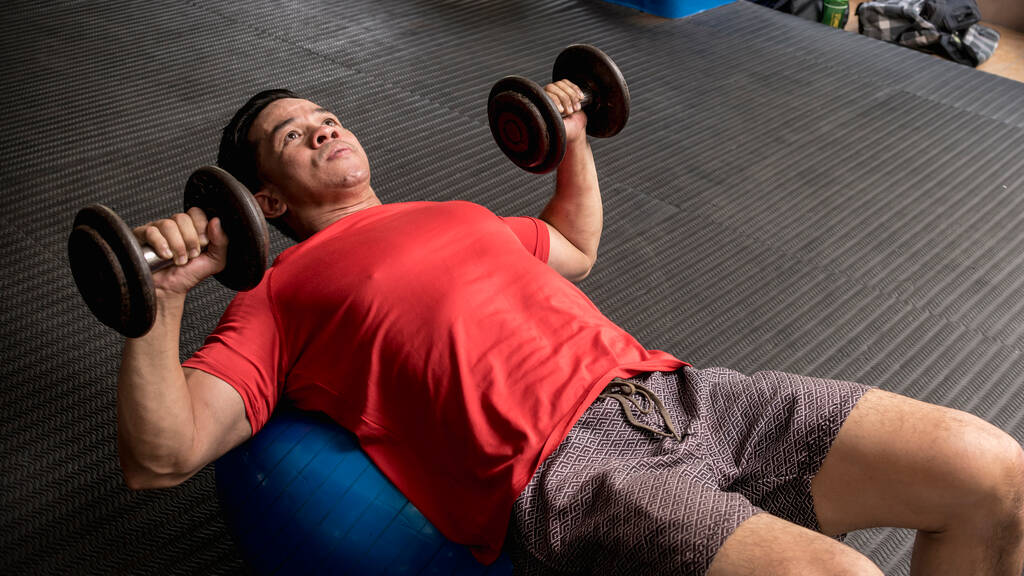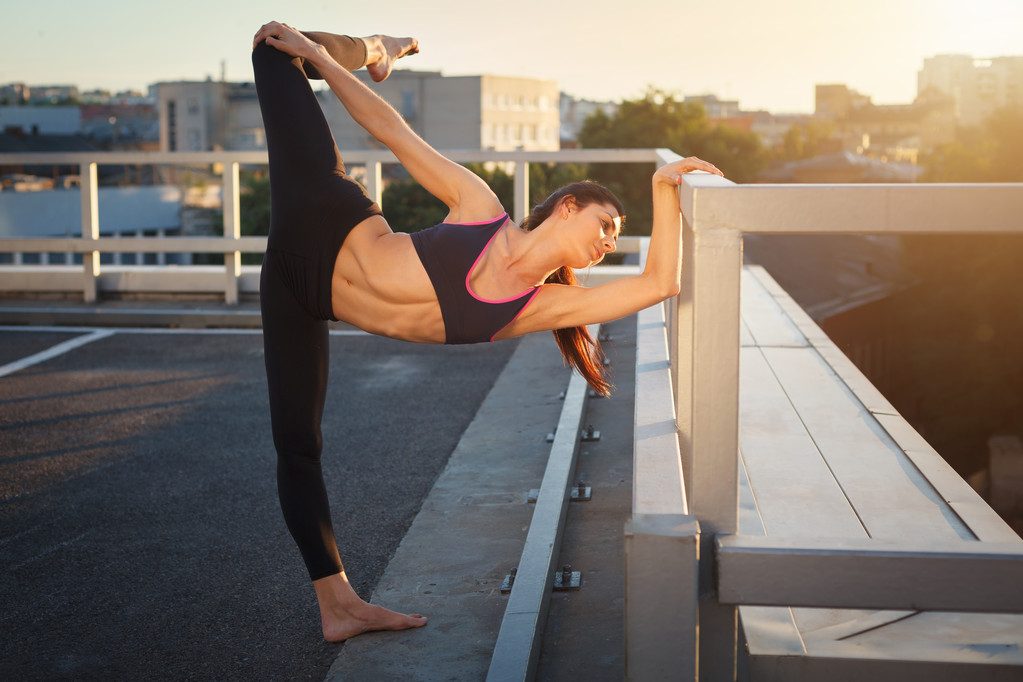The Complete Guide to Effective Upper-Ab Exercises and Workouts
September 18, 2023
Having a sculpted and chiseled core is a fitness goal that many people strive for. The secret to achieving those defined upper abs lies in understanding the anatomy of your abdominal muscles and targeting them with the right exercises. In this complete guide, we will demystify the world of upper-ab workouts and provide you with the tips and techniques to maximize your results.

Demystifying the Abdominal Muscles
Your abs are not just a single muscle, but rather a group of muscles that work together to support your core and stabilize your body. Understanding the anatomy of your abs is key to effectively working them out. The abdominal muscles consist of the rectus abdominis, internal and external obliques, and transversus abdominis.
The rectus abdominis, commonly known as the six-pack muscle, is responsible for flexing your spine and giving you those coveted visible abs. It is a long, flat muscle that extends vertically along the front of your abdomen. The rectus abdominis is divided into segments by tendinous intersections, giving it the appearance of a six-pack when well-developed.
Next, we have the internal and external obliques, which are located on the sides of your waist. The internal obliques are deeper muscles that run diagonally from your lower ribs to your pelvis. They help with trunk rotation and side bending. On the other hand, the external obliques are more superficial and run in the opposite direction, from your lower ribs to your hips. These muscles also assist in trunk rotation and side bending, but they also play a role in compressing your abdomen.
Lastly, we have the transversus abdominis, which acts as a natural corset for your abdomen. This muscle is the deepest of the abdominal muscles and wraps around your torso like a belt. It provides stability and support to your spine and internal organs. The transversus abdominis is often referred to as the "corset muscle" because of its role in cinching your waistline and improving posture.
Now that you have a better understanding of the different abdominal muscles, you can tailor your workouts to target each muscle group effectively. Incorporating exercises that engage all of these muscles will not only help you achieve a toned midsection but also improve your overall core strength and stability. Remember, a balanced approach to training is key for optimal results.
Targeting Your Lower Abs vs Upper Abs: What You Need to Know
When it comes to achieving a chiseled core, it's important to understand the differences between targeting your lower abs and upper abs. While all the abdominal muscles work together to provide stability and support, focusing on specific areas can help you achieve a more balanced and defined look.
Let's start by diving into the world of upper abs and explore some effective exercises to sculpt that desired six-pack. The upper abs, also known as the rectus abdominis, are the muscles responsible for the coveted washboard abs. To target this area, one of the most classic and effective exercises is the crunch.
When performing a crunch, lie on your back with your knees bent and feet flat on the ground. Place your hands behind your head, but be careful not to pull on your head, as this can strain your neck. Engage your core and lift your upper body off the floor, focusing on contracting your abs. Exhale as you lift and inhale as you lower back down. Repeat this movement for a set number of repetitions, feeling the burn in your upper abs.
Now, let's shift our attention to the lower abs, which can be a bit more stubborn and harder to target. However, with the right exercises, you can achieve the desired results. One effective exercise for the lower abs is leg raises.
To perform leg raises, lie on your back with your legs extended and your hands by your sides. Keep your lower back pressed firmly into the floor throughout the exercise. Slowly lift your legs off the ground, engaging your lower abs to control the movement. Lower your legs back down with control and repeat for the desired number of repetitions. This exercise effectively targets the lower abs, helping to strengthen and define them.
In addition to leg raises, reverse crunches are another excellent exercise to engage the lower abs. To perform a reverse crunch, lie on your back with your knees bent and feet flat on the ground. Place your hands by your sides or under your glutes for support. Lift your legs off the ground, bringing your knees towards your chest. As you lift your legs, focus on using your lower abs to initiate the movement. Slowly lower your legs back down and repeat for the desired number of repetitions.
Now, let's explore an exercise that engages both the upper and lower abs, providing you with a full core workout - the bicycle crunch. This exercise not only targets the rectus abdominis but also engages the obliques, giving you a well-rounded core workout.
To perform the bicycle crunch, lie on your back with your hands behind your head and your legs lifted, knees bent at a 90-degree angle. Begin by twisting your torso, bringing your right elbow towards your left knee while extending your right leg. As you twist, engage your abs and feel the contraction in your core. Return to the starting position and repeat on the other side, mimicking a pedaling motion. Continue alternating sides for the desired number of repetitions.
Remember, achieving a chiseled core requires a combination of targeted exercises, proper nutrition, and overall body fat reduction. By incorporating these exercises into your workout routine and maintaining a healthy lifestyle, you can sculpt and define your abs to achieve the desired results.
Situps vs Crunches: Which One is Right for You?
When it comes to working out your abs, situps and crunches are two popular exercises. Both target the abdominal muscles but with slight differences in technique and muscle activation.
Let's take a closer look at the key differences between situps and crunches. Situps are a full-range-of-motion exercise that involves lifting your entire torso off the ground. This movement not only works the abs but also engages the hip flexors and puts strain on the lower back. The hip flexors, a group of muscles located in the front of the hip, are responsible for flexing the hip joint and are activated during situps to assist in lifting the torso off the ground. While situps can be effective in strengthening the abs, the involvement of the hip flexors and the strain on the lower back may not be suitable for everyone.
On the other hand, crunches are a more targeted exercise that focuses solely on the abdominal muscles. By lifting just your upper body off the ground, you can isolate the abs and minimize strain on other muscle groups. This makes crunches a great option for individuals who want to specifically target their abs without putting excessive stress on their lower back or hip flexors. Additionally, since crunches involve a shorter range of motion compared to situps, they can be a safer choice for individuals with lower back issues or those who are new to abdominal exercises.
It's important to note that both situps and crunches can be effective in strengthening and toning the abdominal muscles. The choice between the two exercises ultimately depends on your fitness goals, current fitness level, and any existing injuries or limitations you may have. If you're unsure which exercise is right for you, it's always a good idea to consult with a fitness professional who can provide personalized guidance based on your individual needs.
Are Situps and Crunches Safe for Everyone?
Before diving headfirst into a situp or crunch routine, it's crucial to consider any potential risks and ensure these exercises are safe for you.
Understanding the Potential Risks of Situps and Crunches
Situps and crunches can place excessive strain on the neck and spine if performed incorrectly or with poor form. Those with preexisting neck or back conditions should exercise caution and consult with a healthcare professional before incorporating these exercises into their routine. Additionally, individuals with weak core muscles may experience discomfort or strain during situps or crunches. Remember to listen to your body and modify exercises as needed.
Unlocking the Power of Your Upper Abs: Tips and Techniques
Targeting the upper abs can be challenging, but with the right tips and techniques, you can unlock their full potential and sculpt a strong and defined core.
Effective Exercises to Isolate and Tone Your Upper Abs
In addition to the classic crunch and bicycle crunch, there are other exercises you can incorporate into your routine to take your upper abs to the next level.
- Planks: Planks are a fantastic exercise for the core, including the upper abs. Start in a push-up position, but with your forearms resting on the ground. Engage your abs and hold the position for as long as you can while maintaining proper form.
- Mountain climbers: This dynamic exercise not only engages your abs but also gets your heart pumping. Begin in a plank position and bring one knee towards your chest, alternating legs in a running motion while maintaining a strong core.
- Vertical leg crunches: Lie on your back with your legs straight up in the air. Similar to a traditional crunch, lift your upper body off the floor, reaching towards your toes. This exercise specifically targets the upper abs.
Preparing Your Abs for a Killer Workout: Stretching Tips
Before you dive into an intense upper-ab workout, it's important to properly warm up and stretch your abs to prevent injuries and maximize your performance.
Dynamic Stretches to Warm Up Your Abs
Dynamic stretches involve moving parts of your body through a full range of motion. For warming up your abs, you can try exercises like torso rotations and standing side bends. These stretches improve blood flow and loosen up your muscles, preparing them for the upcoming workout.
Static Stretches to Increase Flexibility and Prevent Injury
Static stretches are exercises where you hold a position for a prolonged period, allowing your muscles to lengthen and relax. After your workout, incorporate static stretches for your abs, such as the standing forward bend or the seated side stretch. These stretches help with flexibility and prevent post-workout muscle tightness or injury.

The Ultimate Upper-Ab Workout Routine
Now that you have the knowledge and techniques to target your upper abs effectively, it's time to put it all together in a killer workout routine.
Workout A: Sculpting Your Upper Abs
Warm-up: Start with 5 minutes of light cardio, such as jogging in place or jumping jacks, to get your blood flowing and raise your heart rate.
Main workout:
- Crunches: 3 sets of 15-20 reps
- Reverse crunches: 3 sets of 15-20 reps
- Bicycle crunches: 3 sets of 15-20 reps
- Plank: Hold for 30-60 seconds, repeat 3 times
- Vertical leg crunches: 3 sets of 15-20 reps
Cool-down: Finish your workout with a few minutes of gentle stretching for your abs and upper body. Take deep breaths and allow your heart rate to gradually decrease.
Remember, consistency is key when it comes to achieving defined upper abs. Incorporate this workout routine into your fitness regimen and stay dedicated to your goals. With time, effort, and the right exercises, you'll be one step closer to rocking those chiseled upper abs you've always wanted!

 Back to Blog
Back to Blog